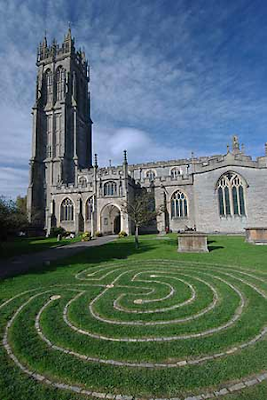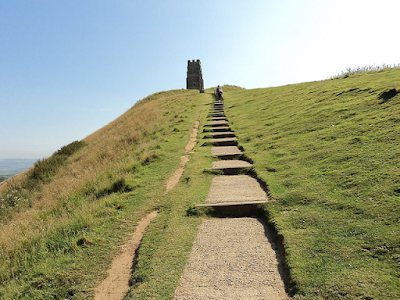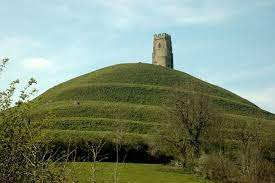How Prevalent Is Goddess Worship In England?
In Great Britain, the holy environment and the shapes of the land, sky, and sea, which are seen as her body, are powerful representations of the Goddess.
In both natural and man-made stone circles, passage burials, mounds, megaliths, and labyrinth-like structures, seekers may locate her hallowed abodes.
Those who practice goddess worship at these locations relate the megaliths and mounds to the recurring themes of birth, death, and rebirth that often represent goddess.
They contend that these enormous stones served as markers for celestial occasions like solstices and equinoxes in the heavenly realm of the Divine Feminine.
The labyrinth's meditative features allow visitors to experience a profound inner journey that leads to a relationship with the Divine, both within and outside of oneself.
Scholars suggest that the labyrinth in the Minoan palace at Knossos may have served the twin functions of housing ceremonial processions and serving as a reflection of the Mother's regenerating body.
Another contentious theory holds that Stonehenge, with its lunar and solar orientations, may have been associated with the "sacred marriage" or even the body of the Goddess, whereas Newgrange, Knowth, and Dowth, three Irish passage graves, are thought by some to be more associated with the life passages of birth and death.
Many people have new perspectives on the enormous Neolithic structures, and as a result, Goddess' language and religion are more readily understood by her supporters.
What Are The Signs Of The Divine Feminine In Glastonbury?
Glastonbury represents the legends of King Arthur, the Knights of the Round Table, and the cup of Christ as seen through conventional eyes.
Glastonbury is seen in a new light when seen through the prism of Goddess Spirituality.
As of Imbolc (February) 2002, visitors to Glastonbury may participate in the newest living tradition of worship of the Feminine Divine at the Goddess Temple in Glastonbury, in addition to seeing historical holy sites where the Goddess has been revered by our ancestors for over 5,000 years.
To ensure that anyone working with Goddess in any of her guises, including Goddess as the one primordial Goddess, will find a place of welcome, this first Goddess Temple of our modern era in the British Isles is dedicated primarily to the Lady of Avalon and secondarily to the Goddess of Ten Thousand Names.
Since June 2003, it has been acknowledged as a registered Place of Worship
The first time a holy space has been acknowledged as a place of worship that does not lay within the patriarchal religious belief systems, but instead within the arms of the Goddess, said Kathy Jones, a person connected to the temple, this is a historic occurrence.
Jones described the temple as a big violet chamber that changes its décor according to the season every six weeks in a private communication.
The Lady of Avalon emanates violet energy, which is why the backdrop vibration is violet.
The worshippers at the temple have a belief in the Great Goddess, who is the One and Many, immanent and transcendent, personal and impersonal, constant and changeable, local and global, inside and outside all of creation, and manifests herself via the seasonal cycle and the Wheel of the Year.
They contend that the Divine Feminine manifests and speaks via all of Nature, the holy landscape, as well as through visions and dreams, sensory experiences, the imagination, ritual, and prayer.
They say that no description of Goddess can ever be expressed in words.
As members of the Goddess People of Avalon, they have a reverence for the Goddess, also known as the Lady of Avalon, who manifests herself via Glastonbury's geography, mythology, and culture.
Temple priestesses known as "Melissas" are there to maintain the area, carry out rituals, and provide healing to the crowd.
The temple will be open for extended hours when money and volunteers become available.
The yearly Glastonbury Goddess Conference, which often draws up to 400 attendees, hosts larger rituals.
The inhabitants of Avalon and the neighborhood utilize the temple for courses, healings, and rituals marking all life transitions.
At addition to the Goddess, other Goddess-loving individuals may also be seen in the temple.
Public contributions are the only source of funding for the temple.
It would be a pity to skip a few additional Goddess-related landmarks while in Glastonbury.
The Labyrinth of Glastonbury Tor is the first; it is a hill that rises above the surrounding area's flat terrain and is home to Saint Michael's Tower.
According to Kathy Jones, who was quoted by Liz Fisher in the Goddessing Regenerated News Journal, "The hollow hill atop Glastonbury Tor is where (the Goddess) Rhiannon rides her white horse between the realms
The seven circuit Goddess Labyrinth's course is marked by terraces that can be seen within the Tor.
Neo-Pagans often use the Tor's meandering labyrinth-like terraces as part of their internal journeys to communicate with the Goddess both within and outside of them.
There are seven circuit labyrinths that are devoted to Goddess and may be found all throughout the ancient globe.
(Refer to Goddess worship in France: France's Chartres) The curves of the scenery here in Avalon, which means the location of apples, are suggestive of the form of the swan.
The goddess Brigit is referred to as the White Swan and the First Ancestor of the Swan Clan, according to Jones, who is cited by Fisher.
With a bird's body and a snake-like neck, Brigit is the ancient Bird and Snake Goddess in one form as the White Swan.
The features of the hills that make up Glastonbury's Isle of Avalon may be seen when it emerges from the surrounding Summerland meadows, like the form of a swan in flight.
Fisher also links Brigid, or Brigit, to the curative waters of Glastonbury's Chalice Well, noting that Jones thinks Brigid's bell and bag of curative herbs are buried there.
According to a more widely accepted urban legend, Joseph of Arimathea may have buried here the cup of the Holy Grail from the Last Supper of Christ.
The Druids saw the cup as the Cauldron of Cerridwin, the Mother's womb from which her devotees would be birthed, which is another connotation for the Grail.
The vesica piscis, a well design motif, was originally a pre-Christian goddess emblem that was eventually transformed into a fish in Christianity.
It is recognized as a symbol for the union of the feminine and masculine, the yin and yang, or the point at which the conscious and unconscious come together.
It has a connection to the mandorla, sometimes known as the yoni because of its almond form.
The tombs of King Arthur and Guinevere may have been discovered on the grounds of Glastonbury Abbey, which is said to have been constructed on an ancient holy place of a Goddess.
As of right now, the Goddess Temple is accessible to the general public for prayer, ritual, meditation, and worship on Tuesdays and Saturdays from 11 a.m to 5 p.m., as well as on Fridays.
On certain days, rituals are performed in honor of the Goddess.
There are tours provided that provide a detailed herstory of the local locations.
How to reach Glastonbury?
Using a vehicle, leave London on the M3, then follow the A303 westward.
Take the directions provided to reach Glastonbury.
It takes around two hours to go straight from Heathrow Airport and three hours to travel directly from Gatwick Airport.
Take the train from Paddington to Bath, Bristol, or Taunton if you're in downtown London then go to Glastonbury via bus.
Take the train to Castle Cary and then get a cab to go the remaining distance to Glastonbury.
Twice daily National Express coaches depart from Victoria Station for Glastonbury.
You may reach the temple by writing to The Goddess Temple, The Courtyard, 2-4 High Street, Glastonbury, Somerset BA6 9DU England, or by visiting www.goddesstemple.co.uk
Prior to going, visitors should get precise instructions to the temple by contacting it.



















